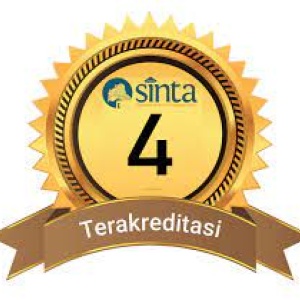Struktur, Pandangan Dunia, dan Struktur Sosial dalam Hikayat Mareskalek Karya Abdullah bin Muhammad al-Misri: Tinjauan Strukturalisme Genetik
DOI:
https://doi.org/10.37014/jumantara.v12i2.1353Keywords:
Structure, World View, Social Structure, Hikayat MareskalekAbstract
This research aims to reveal the structure, world view, and social structure in Abdullah bin Muhammad al-Misri'sHikayatMareskalek (HM) with the theory of genetic structuralism by Lucien Goldmann's perspective. This research used the first version of HM text or HMa Cod. Or. 1724 edited by Zaini-Lajoubert. The data of this study were obtained by using the reading-note technique and dialectical method. The data for the three research variables are HM text; philosophical, cultural, and ideological texts; as well as texts of social research results, such as economics, politics, and the like that are relevant to HM. These data are analyzed by a dialectical method to show the relationship between variables by placing them in the overall social structure. The results of this study indicate that the structure of the Hikayat is formed from various oppositional relations which generally show colonial opposition to the natives and the Chinese,as well as Islam and Islamism to colonialism. The structure depicts Mareskalek's interiority as a troubled hero, but he wants to unite with the world. By borrowing a novel concept of Lukacs, HM is a type of education. The worldview expressed is leadership elitism and Islamism. The first world view appears from the structure that puts the colonial as superior to other social classes. Meanwhile, Islamism can be seen from the structure that declares Islam and Islamism above colonialism. Both of them are contradictory related. On the one hand, al-Misri stated the values of colonial superiority by manipulating historical facts. On the other hand, he was against colonialism though not directly. This is made possible by the social changes that occurred as a result of Daendels' various policies. In addition, the author is in an intermediary position. As part of the Arab community, he is below the colonial and above the natives in the structure of the Dutch East Indies society.References
Abdullah, Muhammad, and Muhammad Junaid. Nadvi. "Understanding the Islamic World-View." The Dialogue 4, 3 (2011): 268-89.
Ahsan, Ivan Aulia. "Bagaimana Daendels Membangun Pemerintahan Modern Di Hindia Belanda." Tirto.Id. 2021. https://tirto.id/bagaimana-%0A %09daendels-membangun-pemerintahan-modern-di-hindia-belanda-cyja%0A.
Alatas, Ismail Fajri. "Disrupting Temporality: Negotiating Modern Soverignity in the Hikayat Mareskalek." In Islam and Multiculturalism: Between Norms and Forms, edited by F. Naoko and S. Shohei, 141-56. Tokyo: JSPS Asia dan Africa Science Platform Program, Organization for Islamic Area Studies, Waseda University. 2012.
Carey, Peter. Daendels and the Sacred Space of Java, 1808-1811: Political Relations, Uniforms and the Postweg. Nijmegen: Vantilt. 2013.
Chambert-Loir, Henry. "Abdullah Al-Misri: Penulis Teori Politik Di Jawa Pada Awal Abad Ke-19." In Kembara Bahari: Esei Kehormatan 80 Tahun Adrian B. Lapian, edited by Bondan Kanunoyoso, Hilmar Farid, and Ivan Aulia Ahsan, 223-46. Jakarta: Komunitas Bambu. 2009.
Claver, Alexander. Dutch Commerce and Chinese Merchants in Java: Colonial Relationship in Trade and Finance, 1800-1942. Leiden dan Boston: Koninklijke Brill NV dan Hotei Publishing. 2014.
Dorleans, Bernard. Orang Indonesia & Orang Prancis: Dari Abad XVI Sampai Dengan Abad XX. Jakarta: Kepustakaan Populer Gramedia. 2016.
Drewes, Gerardus Willebrordus Joannes. Directions for Travellers on The Mystic Path: Zakariyya Al-Ansari's Kitab Fath Al-Rahman and Its Indonesian Adaptations with an Appendix on Palembang Manuscripts and Authors. The Hague: Martinus Nijhoff. 1977.
Faruk. Novel Indonesia, Kolonialisme Dan Ideologi Emansipatoris. Yogyakarta: Penerbit Ombak. 2016.
Faruk. Pengantar Sosiologi Sastra: Dari Strukturalisme Genetik Sampai Post-Modernisme. Cetakan VI. Yogyakarta: Pustaka Pelajar. 2019.
Faruk. Metode Penelitian Sastra: Sebuah Penjelajahan Awal. Yogyakarta: Pustaka Pelajar. 2020.
Istanti, Kun Zachrun. Metode Penelitian Filologi & Penerapannya. Yogyakarta: Elmatera. 2013.
Kartodirdjo, Sartono. "Religious Movements of Java in The 19th and 20th Centuries." In Profiles of Malay Culture: Historiography, Religion and Politics, edited by Sartono Kartodirdjo, 85-106. Jakarta: Direktorat Jenderal Kebudayaan, Kementerian Pendidikan dan Kebudayaan dan Koninklijk Instituut Voor de Taal-, Land-en Volkenkunde. 1976.
Laffan, Michael. Sejarah Islam Di Nusantara. Yogyakarta: Bentang Pustaka. 2015.
Linden, A.L.V.L. De Europeaan In De Maleische Literatuur. Meppel: B. Ten Brink. 1937.
Lombard-Salmon, Claudine. "The Han Family of East Java: Enterpreneurship and Politics (18th-19th Centuries)." Archipel 41(1991): 53-87.
Lukacs, Georg. The Theory of the Novel: A Historico-Philosophical Essay on the Forms of Great Epic Literature. London: The Merlin Press.1971.
Ma'mun, Titin Nurhayati, and Hazmirullah. 2020. "Sepak Terjang Bagus Rangin Dalam Surat Dipati Natadireja Kepada Daendels (1808)." Jumantara: Jurnal Manuskrip Nusantara 11, 2 (2020): 163-78.
Mandal, Sumit K. Becoming Arab: Creole Histories and Modern Identity in the Malay World. United Kingdom: Clays, St Ives plc. 2018.
Marihandono, Djoko. "Strategi Pertahanan Napoleon Bonaparte Di Jawa (1810-811)." In Konferensi Nasional Sejarah Oleh Masyarakat Sejarawan Nusantara. Jakarta. 2004.
Murtini, and Bagus Kurniawan. "Paradigma Multikultural Dalam Sastra Melayu Klasik Dan Sastra Indonesia Modern." In Membangun Citra Indonesia Di Mata Internasional Melalui Bahasa Dan Sastra Indonesia, edited by Yang Xiaoqiang, Nicholas Jackson, Triwati Rahayu, Roni Sulistiyono, Christopher A. Woordrich, Rina Ratih Sudaryani, Wachid Eko Purwanto, and Yosi Wulandari, 643-54. Yogyakarta: Penerbit Program Studi Pendidikan Bahasa dan Sastra Indonesia, Fakultas Keguruan dan Ilmu Pendidikan, Universitas Ahmad Dahlan. 2014.
Nas, Peter J.M., and Pratiwo. "Java and De Groote Postweg, La Grande Route, the Great Mail Road." Bijdragen Tot de Taal-, Land- En Volkenkunde 158, 4 (2002): 707-25.
Skinner, C. "Transitional Malay Literature: Part 1 Ahmad Rijaluddin and Munshi Abdullah." Bijdragen Tot de Taal-, Land-En Volkenkunde 134, 4 (1978): 466-87.
Sudrajat, Ajat. "Mesianisme Dalam Protes Sosial (Kasus Perjuangan Petani Di Jawa Abad XIX Dan XX)." Cakrawala Pendidikan 2 (1991): 93-104.
Sztompka, Piotr. Sosiologi Perubahan Sosial. Jakarta: Kencana. 2017.
Taslim, Noriah. "The Image of The Europeans in Hikayat Mareskalek." Malay Literature 29, 1 (2016): 73-99.
Taylor, Jean Gerlman. The Social World of Batavia: Europeans and Eurasians in Colonial Indonesia. Madison, Wisconsin: The University of Wisconsin Press. 2009.
Wertheim, W. F. "Changes in Indonesia's Social Stratification." Pacific Affairs 28, 1 (1955): 41-52. https://doi.org/10.2307/2753710.
Wibowo, Anjasmoro. "Diri Dan Liyan Dalam 'Arsy Al-Muluk Karya Abdullah Bin Muhamad Al-Misri: Analisis Pascakolonial Edward Said." Universitas Gadjah Mada. 2019.
Wilford, Rick. "Facism." In Political Ideologies: An Introduction, edited by Vincent Geoghegan and Rick Wilford, 121-49. Oxon dan New York: Routledge. 2014.
Witkam, Jan Just. Inventory of The Oriental Manuscripts of The Library of The University of Leiden Volume 7: Manuscripts OR. 60001-OR. 7000 Registered in Leiden University Library in The Period Between May 1917 and 1946. Leiden: Ter Lugt Press. 2007.
Zaini-Lajoubert, Monique. Karya Lengkap Abdullah Bin Muhammad Al-Misri. Jakarta: Komunitas Bambu. 2008.
Zaini-Lajoubert, Monique. "La «bonne Gouvernance» Selon l'ecrivain Indonesien Abdullah Bin Muhammad Al-Misri (Fin XVIIIe s.-Debut XIXe S.)." Archipel 78 (2009): 209-39.
Zarkasyi, Hamid Fahmy. "Worldview Islam Dan Kapitalisme Barat." Tsaqafah 9, 1 (2013): 15-38. https://doi.org/10.21111/tsaqafah.v9i1.36.
Downloads
Published
Issue
Section
License
Copyright (c) 2021 Jumantara: Jurnal Manuskrip Nusantara

This work is licensed under a Creative Commons Attribution-ShareAlike 4.0 International License.
- This statement is the author's commitment to respect copyright, both in terms of citing other people's work and utilizing journal content. If necessary, the author can send an Authenticity Statement of Article stating that "this work is the author's original idea and has never been sent to another publisher and published in any publication"
- The author retains copyright.
- The moral rights of publication belong to the author.
- Formal legal aspects in the use of journal publications refer to the Creative Commons Attribution-ShareAlike 4.0 (CC BY-SA) license, which means that journal content can be used freely for any purpose.










